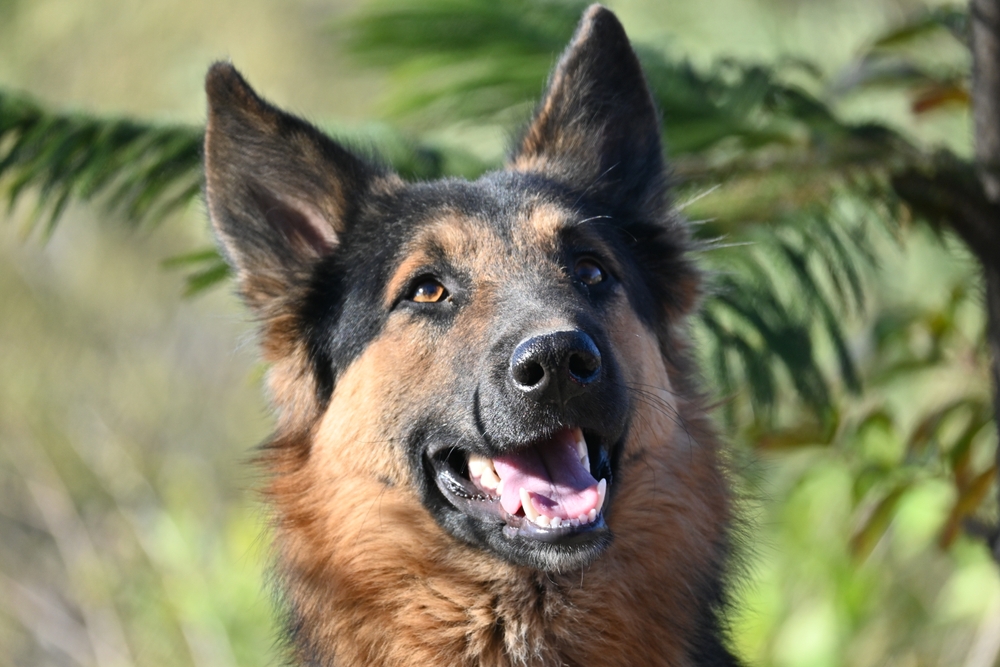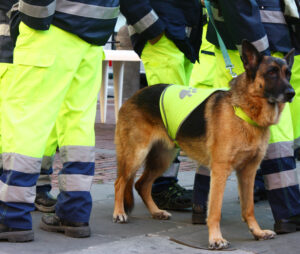German Shepherds are renowned for their intelligence, loyalty, and protective instincts. Whether working as police dogs, guarding homes, or being loyal companions, their reputation as natural protectors is well-deserved. But what makes German Shepherds so protective? This blog decodes their guard dog instincts, exploring their history, traits, and training tips to better understand this remarkable breed.
The History Behind Their Protective Nature
To understand why German Shepherds are so protective, we must look at their origins.
Developed for Herding and Protection
German Shepherds were bred in the late 19th century in Germany for herding livestock. Their role required intelligence, courage, and an instinct to guard flocks from predators, which laid the foundation for their protective behaviors.Military and Police Roles
During World War I and II, German Shepherds were used for military purposes, excelling in tasks like guarding, messenger duties, and detecting mines. Their adaptability and protective nature made them ideal for high-stakes roles.Selective Breeding
Over generations, breeders prioritized traits like loyalty, intelligence, and an innate sense of duty, reinforcing their natural guarding abilities.
Instincts That Drive Their Protective Nature
German Shepherds’ protective behaviors aren’t accidental—they are deeply rooted in their instincts and traits:
Strong Pack Mentality
German Shepherds have a strong sense of loyalty and pack orientation. To them, their family is their pack, and they will go to great lengths to protect their loved ones.Territorial Instincts
These dogs are naturally territorial and will guard their home and property against perceived threats. They are quick to alert their owners to unfamiliar people or unusual sounds.Fearless and Confident
German Shepherds are confident and fearless by nature. This bravery allows them to stand their ground in the face of danger, making them effective protectors.High Intelligence
Their intelligence enables them to assess situations quickly. They can differentiate between a harmless visitor and a potential threat, making their protective behavior measured rather than impulsive.
How Early Socialization Shapes Protection
While German Shepherds have innate protective tendencies, early socialization is critical for shaping these instincts:
Introducing New Environments
Expose your German Shepherd puppy to various environments, people, and animals. This helps them learn to differentiate between normal and threatening situations.Positive Experiences
Encourage positive interactions with strangers and other pets to reduce overprotectiveness or aggression stemming from fear.Controlled Guarding Behavior
Teach your German Shepherd to alert you to potential threats without becoming overly reactive. Commands like “Quiet” can help manage barking.
Training Tips to Enhance Protective Skills
To harness your German Shepherd’s protective instincts constructively, training is essential.
1. Obedience Training
Start with basic obedience commands like “sit,” “stay,” and “come.” These commands establish your leadership and build a foundation for more advanced training.
2. Focus on Recall
A strong recall ensures your German Shepherd will return to you on command, even in high-stress situations. This is critical for controlling their protective behavior.
3. Advanced Guard Training
For owners looking to enhance their dog’s protective abilities, professional training programs are available. These programs teach controlled guarding techniques, ensuring your dog knows when and how to act.
4. Reinforce Calm Behavior
Reward your German Shepherd for calm behavior in new situations. This prevents them from becoming unnecessarily anxious or aggressive.
5. Use Positive Reinforcement
Always use positive reinforcement methods like treats, praise, and play to encourage desired behaviors. Avoid punishment, as it can lead to fear-based aggression.
Understanding the Difference Between Protection and Aggression
It’s important to differentiate between protective behavior and aggression in German Shepherds.
Protective Behavior
Protective behavior is controlled and purposeful. Your German Shepherd may bark at a stranger approaching your home or stand between you and a perceived threat, but they remain calm and observant.Aggression
Aggression is uncontrolled and stems from fear, insecurity, or lack of training. Signs include excessive barking, lunging, or biting without provocation. Proper training and socialization can prevent aggressive tendencies.
Are All German Shepherds Protective?
While most German Shepherds exhibit protective instincts, the degree of protectiveness varies:
Nature vs. Nurture
Genetics play a significant role, but how a German Shepherd is raised and trained has a major impact on their behavior.Individual Temperaments
Some German Shepherds may have a naturally more relaxed temperament, while others may be more vigilant and watchful.Purpose-Bred Lines
Working-line German Shepherds are often bred for high drive and protective instincts, while show-line German Shepherds may have a calmer demeanor.
Common Challenges in Managing Protective Instincts
Managing a German Shepherd’s protective instincts can come with challenges:
Overprotectiveness
Some German Shepherds may become overly protective, perceiving threats where none exist. Proper socialization and training help mitigate this behavior.Separation Anxiety
German Shepherds form strong bonds with their owners and may develop separation anxiety, leading to destructive behavior when left alone.Reactiveness
Without proper training, German Shepherds may react too quickly to perceived threats. Teaching impulse control through commands like “Wait” and “Leave It” is crucial.
Tips for Raising a Well-Balanced German Shepherd
Start Training Early
Begin training and socialization as soon as you bring your puppy home.Exercise Their Body and Mind
German Shepherds are high-energy dogs that require daily physical exercise and mental stimulation to stay healthy and happy.Provide a Job
Give your German Shepherd a sense of purpose. Activities like obedience competitions, agility courses, or tracking exercises tap into their working instincts.Set Clear Boundaries
Establish rules and boundaries early to prevent undesirable behaviors.Work with Professionals
If you’re unsure about training your German Shepherd, seek help from professional trainers experienced with the breed.







